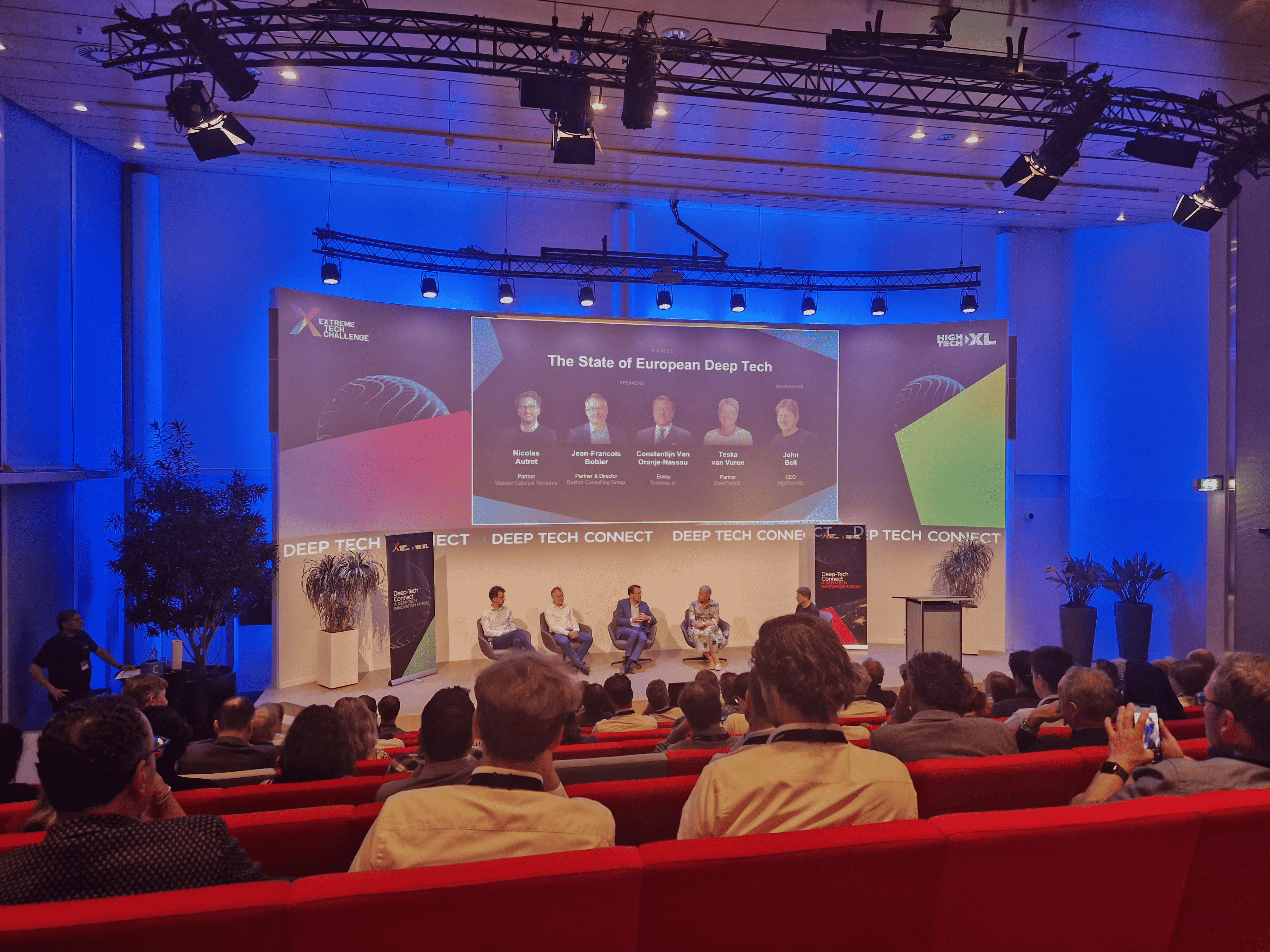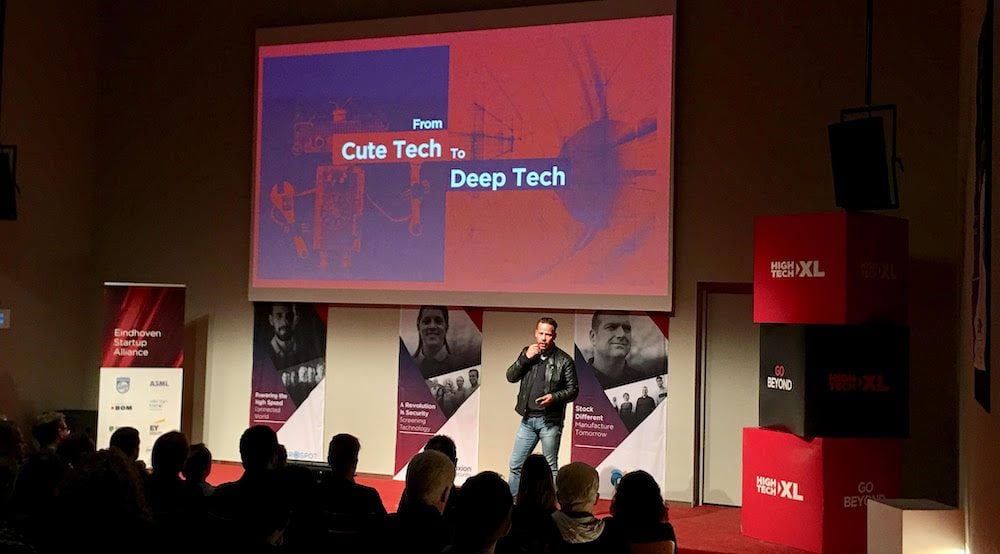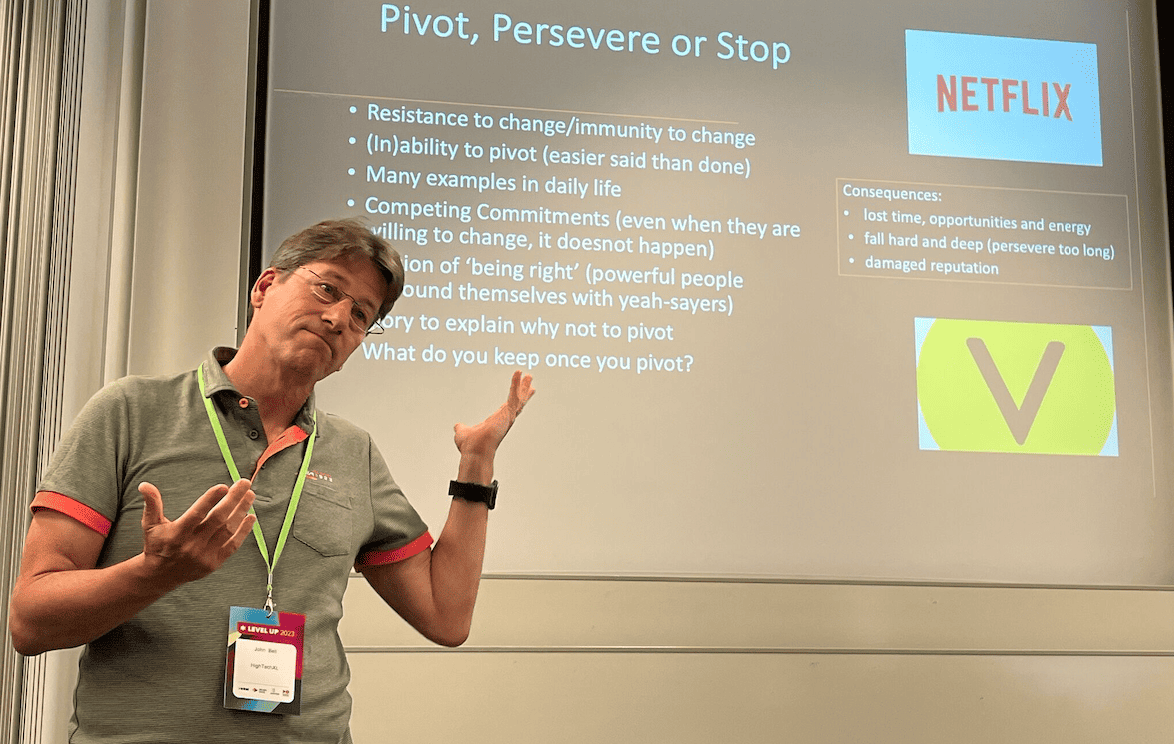
“Even with the best start-ups, things tend to go really wrong somewhere along the line”, HighTechXL CEO John Bell told about 40 attendees during the ‘Pivoting with a Deep Tech Start-up’ workshop at the LEVEL UP event earlier this week.
In that case, you always have an option to right the sinking ship – pivoting away from underperforming products and personnel to a fresh approach and new opportunities. Sometimes, even wildly successful companies need to think about pivoting – about shaking things up as the business environment changes.
While pivoting can be necessary, human nature means people often resist change, afraid of losing their livelihood and status, he said. Moreover, it’s difficult to know if you should pivot at all, noting he’s seen ‘zombie companies’ die, only to pop up again and succeed. “Pivoting always hurts,” he said. “You have to give up something. But if you pivot too late, you lose a lot of time.” Bell knows of what he speaks. He left a corporate business for the adventure of building deep-tech ventures.

“Pivoting sounds so easy”, John Bell said. “There are at least ten pivot directions. You can do something on the business model or anything else. You could think, just do it, and you check a different channel, and then you’re done. Well, it’s not so easy. At least, based on my experience, we have looked at many start-ups. We help them grow, about ten to fifteen new ones per year. And we always come to a point when you have to ask: until when will you continue? Will you stop? Will you destroy the whole team? That’s what we do all the time. About 50% of all teams that start will be stopped by us or themselves.”
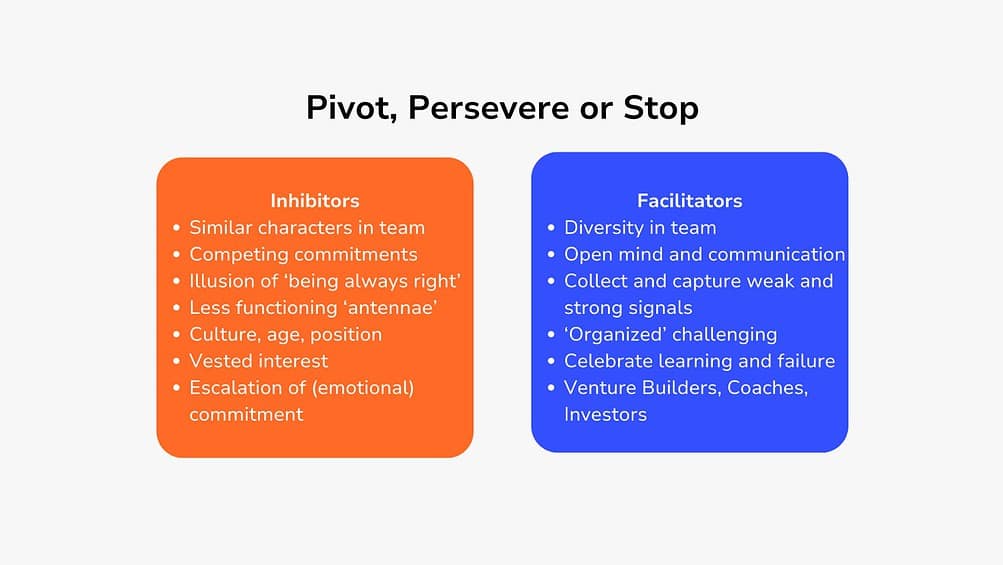
But then there’s also the option to change them in a certain direction. “Sometimes it’s that, or go ahead and be stubborn until you hit a concrete wall. And even then, once you hit a concrete wall, you can still go through it or open the door next to it. So, there’s always this option to pivot. But it’s important to understand what a pivot actually is. It’s a change in strategy, but not in the mission, not in the vision.”
Protection mechanism
It’s so hard to pivot because people have a resistance to change, Bell adds. “People don’t want to change. They are happy with how it was yesterday and the day before and maybe their whole life. So, it’s incredibly challenging to pivot or to change. Many people even have an immunity to change. It’s like a protection mechanism. As human beings, we want to feel comfortable; we know what we had yesterday. Giving up something that we know is highly challenging.”
Still, change is part of our lives, Bell explains. People get sick, are fired, and have to move – everything causes disruptions. And we survive most of these changes, or they even help us become stronger. People only find out about the alternative after they are forced to meet it. “Many people stay in their role in a certain company because they are afraid they will lose their income or status or whatever. There are always reasons why people try not to pivot: I have no time to change because I have my family, and I need to take care of my mom. Or this next role for me is the best thing in this company. In private life, it’s the same. People make stories about why they don’t want to pivot. Because, again, pivoting hurts.”
A good and diverse team to support you is important, as well as an open mind to learnings and failures. Also, coaches and venture builders like accelerators and incubators can take up the role of pushing toward a pivot.
Timing
One of the most difficult parts of pivoting is the right timing. “If you forget to pivot or pivot too late, you lose a lot of energy. You a lot of time. And maybe end up in a situation where you have to start all over again.” There are tools and books to help you with this, but every situation is different. To support this view, Bell gave the examples of VanMoof and Netflix.
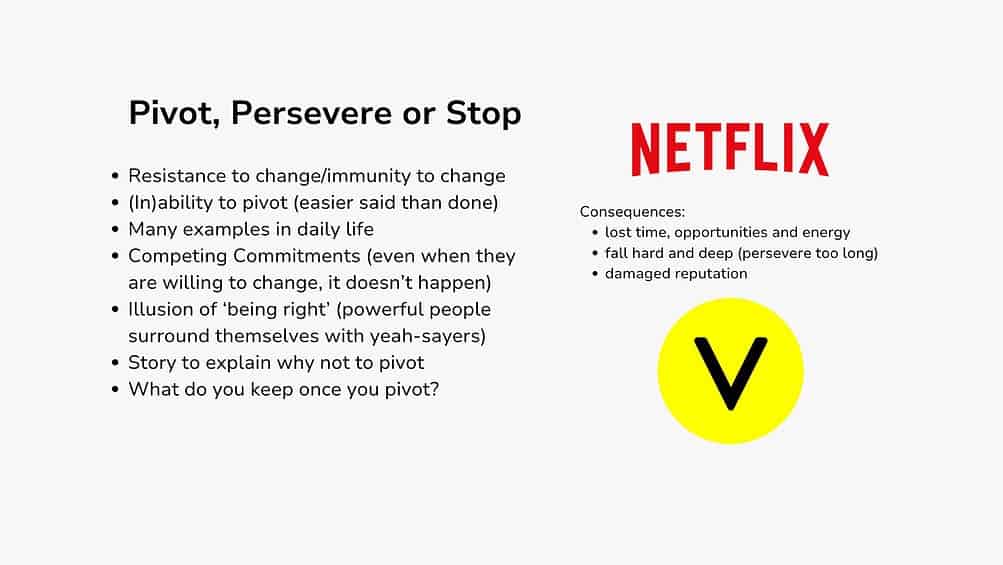
“Vanmoof might have been a company that could have pivoted a little bit earlier, although it’s pretty difficult to say from a distance. They kept working with their specific designs, products, and components, which can be great, but if they are not the best of the best and they break down all the time, then you have a problem. Netflix is a company that has changed over the years. From renting video cassettes into CDs and DVDs and now, in the end, even making their own movies. They were able to change, to pivot business-wise. It is a great example when you listen to your customers, and you are able to change based on their feedback.”



